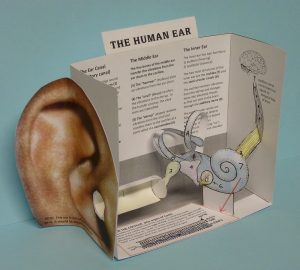61: The ear
1) DRAWING LESSON
64 minutes
For this drawing, I recommend doing the videos BEFORE doing the drawing. I think that the elements of the drawing might make more sense if you have seen the animations first. Better yet, watch the animations both before AND after you do the drawing! (I’ve watched them quite a few times, so I am not asking you to do anything I have not done myself.)
THE VIDEO YOU SHOULD WATCH ARE POSTED AT THE BOTTOM as SUPPLEMENTAL VIDEOS
2) ACTIVITIES
Activity 61-1: Make a paper model of the ear
The patterns and directions for this model are posted in the free downloads on this website. But here is a quick link you can use:
https://ellenjmchenry.com/cut-and-assemble-paper-model-of-the-human-ear/
Activity 61-2: Experiment with Hertz
There are online tone generators that will let you type in a number and hear what it sounds like. You can try one of these, or you can just search the internet with key words like “online tone hertz generator.” Your speakers will be the limiting factor for low notes. Computer speakers won’t be able to generate low notes very well. They do better with high sounds, but they still might not be able to produce sounds beyond 15,000 Hz.
http://onlinetonegenerator.com/
Activity 61-3: What is a cochlear implant?
Some cases of deafness are caused by a malfunction in the hair cells in the cochlea that are supposed to turn vibrations into action potentials. If the hair are damaged or missing, the vibrations never get translated into electrical signals. A special apparatus called a cochlear implant can do this artificially, generating electrical signals for the auditory nerve to take to the brain. The implant can’t ever be as good as the wonderfully designed hair cells, but at least it can restore some sense of hearing, which in many cases means a higher quality of life for the person who is going deaf. The person may be able to continue driving and do their normal daily routine.
Watch these video clips to learn about more cochlear implants: (If a link doesn’t work you can just use these keywords to do your own search.)
How a cochlear implant works (animation)
Animation showing cochlear implant surgery, followed by clips from a real surgery
What “sound” through the cochlear implant would sound like if you could hear it with a normal ear
Activity 61-4: Ear anatomy Bingo game
If you are doing this curriculum with a class or a small group and have some other students to play with, try this Bingo game about ear anatomy:
https://ellenjmchenry.com/store/wp-content/uploads/2016/11/Ear-bingo.pdf
Activity 61-5: Drawing the outer ear (pinna)
If you would like some tips on how to draw the ear, here are a few good instructional videos from YouTube:
How to draw the ear by Circle Line Art School (5 min.)
How to draw ears, by Proko (includes a bit more anatomy info, too) (and some funny stuff) 6 min.
How to Draw an Ear by Jonathan Harris (4 min, but film is sped up)
3) SUPPLEMENTAL VIDEOS
Anatomy of the human ear with nice animation
How your ear works– a BBC video clip (less than 2 minutes)
Auditory transduction (FABULOUS ANIMATION gotta watch this one!)
How the inner ear balance system works (another “must watch” animation)


